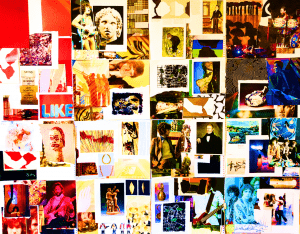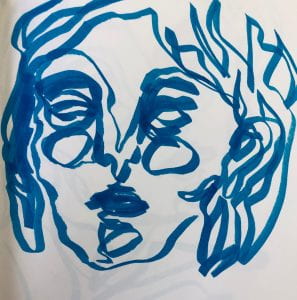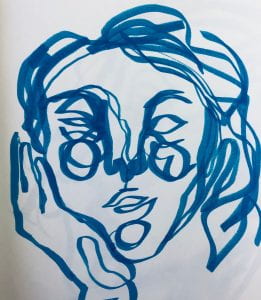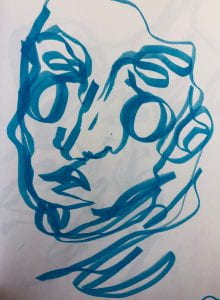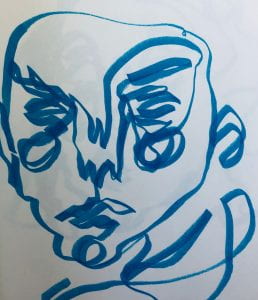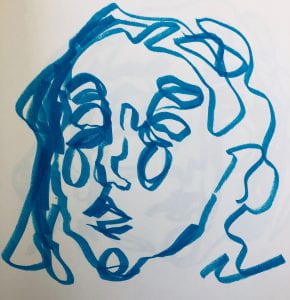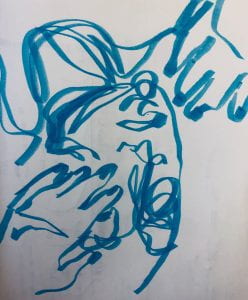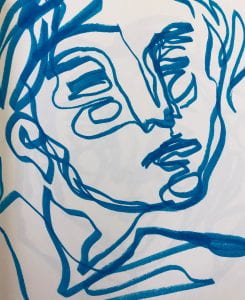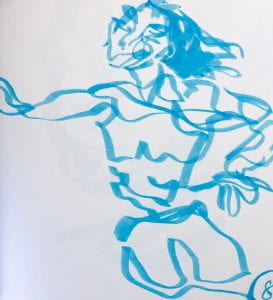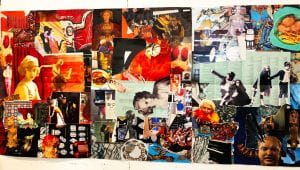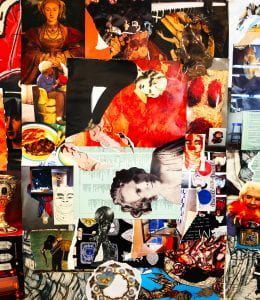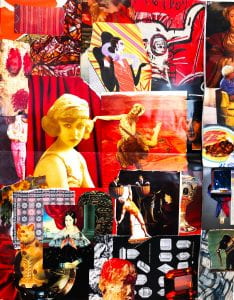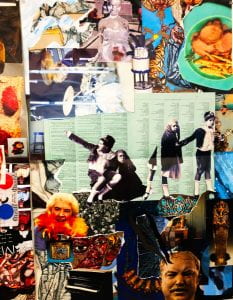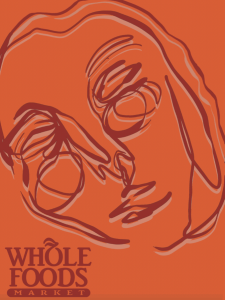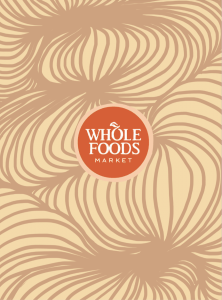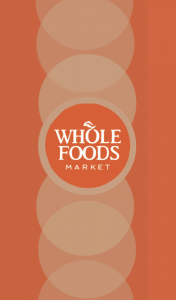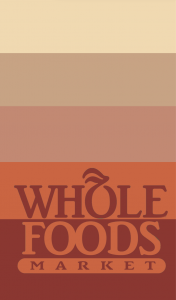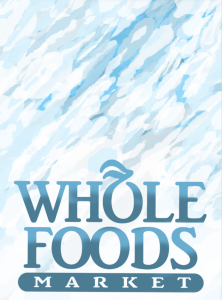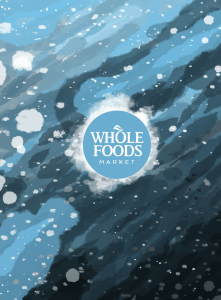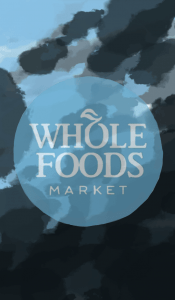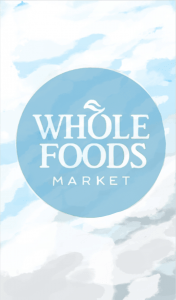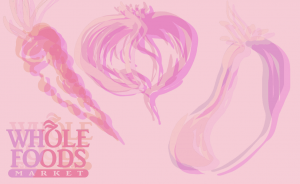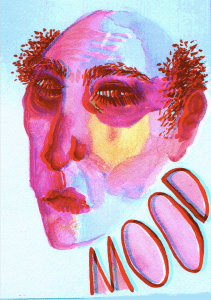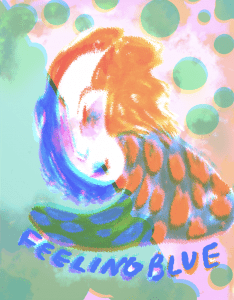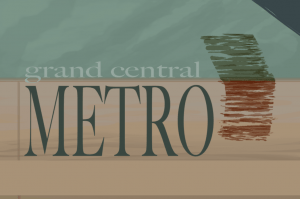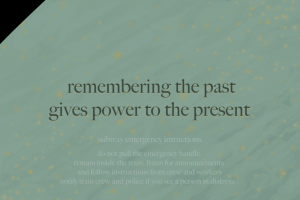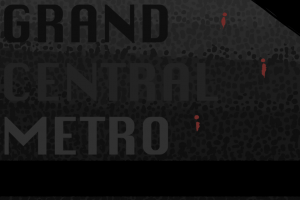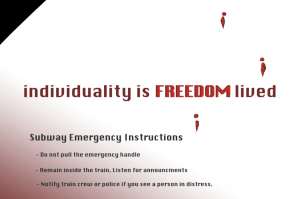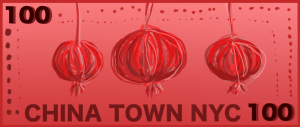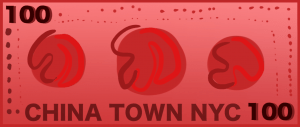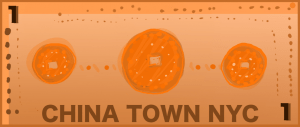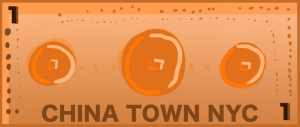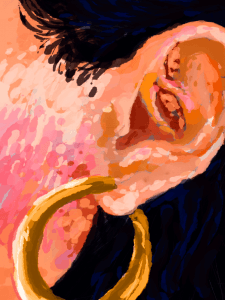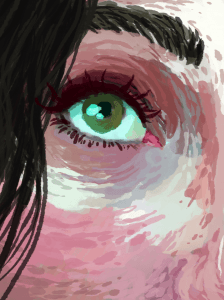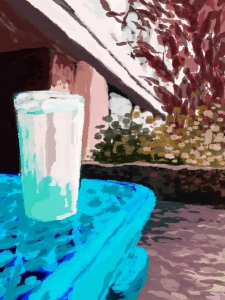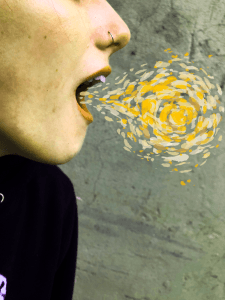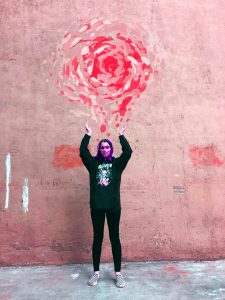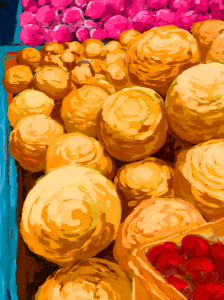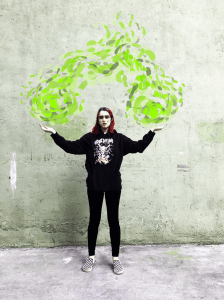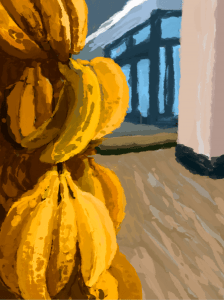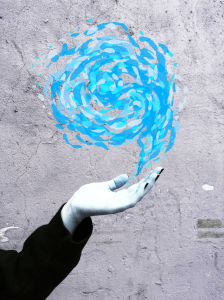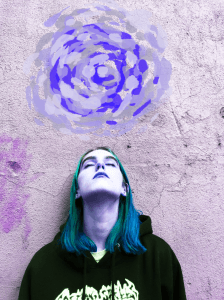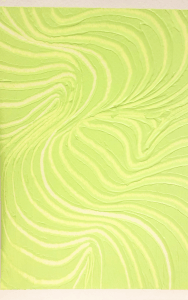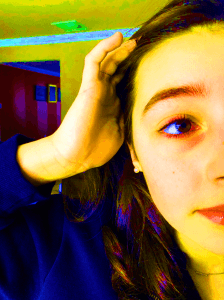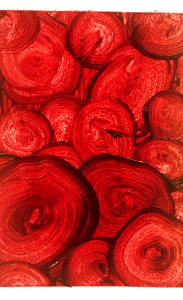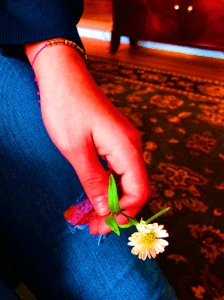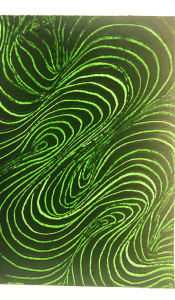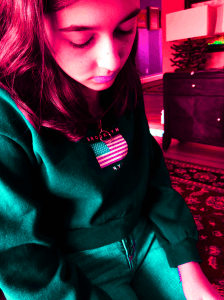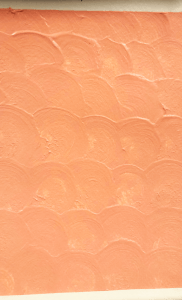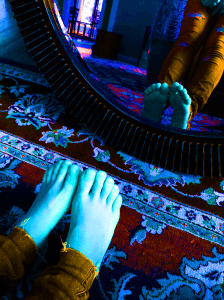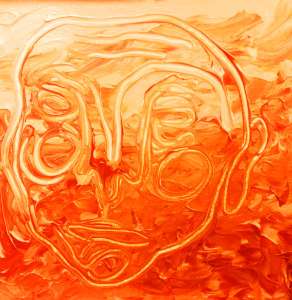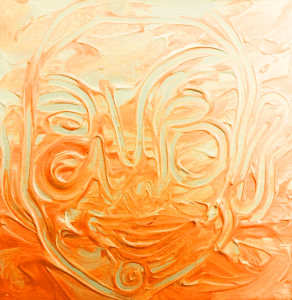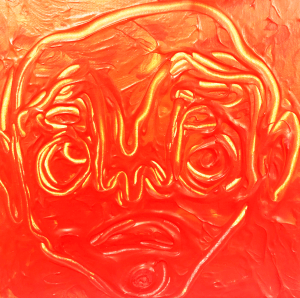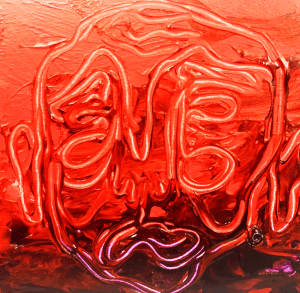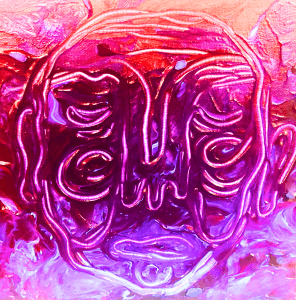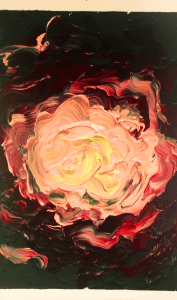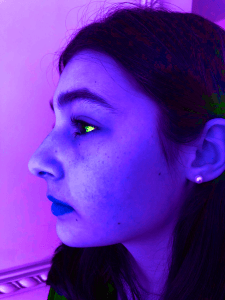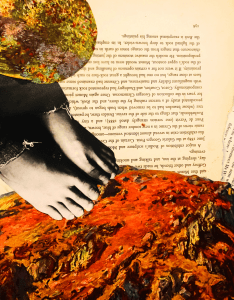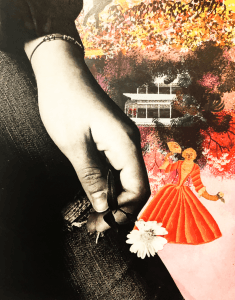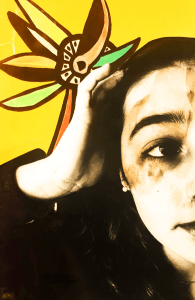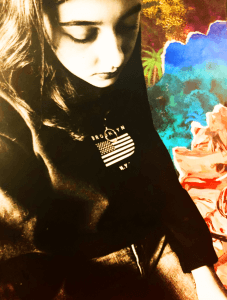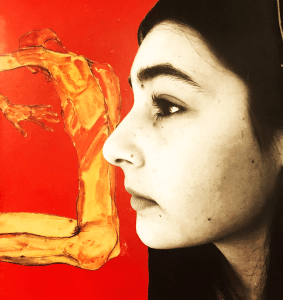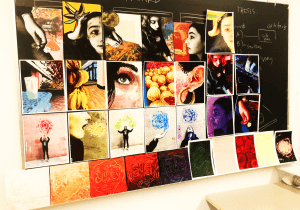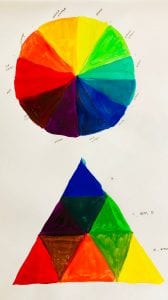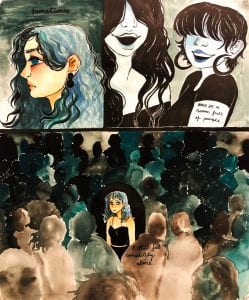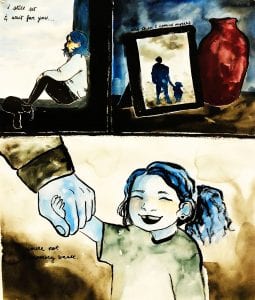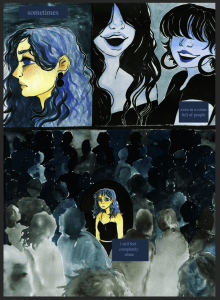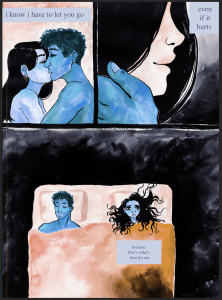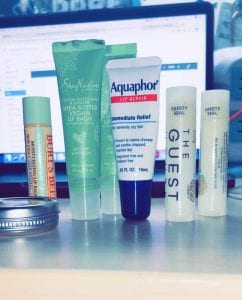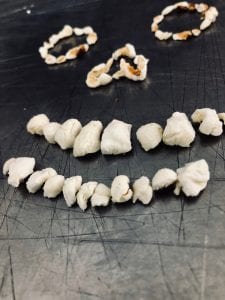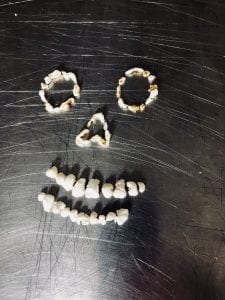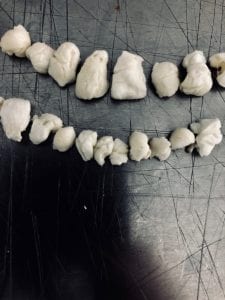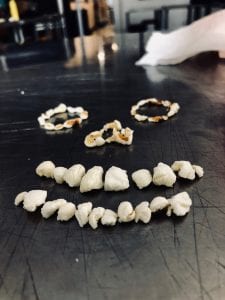Process:
This is a picture of my five foot by six foot mind map collage made for inspiration for this project.
The photos pictures above are rough sketches of potential portraits I could create in monochrome with acrylic paint. This was my original idea for bridge five but it ended up falling through.
Final:
For this project I was very focused on the idea of color. I began leaning towards this subject before the project had even been assigned. Ever since our first seminar assignment of the semester, the color essay, I have steadily become more and more fascinated with the idea of color. In my final essay, I write that “the concept of color, which is easily old enough to predate all of our written histories, has always been utterly revolutionary. Color is an ever-changing constant, the epitome of a definite oxymoron. We have been surrounded by the same colors for tens of thousands of years, and yet we are constantly finding ways to repurpose them and shape them into something entirely bold and new.” A lot of my fascination stems from color association and how that was utilized by impressionist painters to create works that deeply connected to viewers. I think my final collage piece relates to my work over the course of the semester because it was definitely a new experience for me. I have been continuously challenging myself in this class to try new things and push myself out of my comfort zone, and I think with this project I really succeeded. I created a piece that was entirely collaged from found images and I had never collaged or worked large scale prior to this class. I think I am definitely more aware of the effect larger visual pieces can have on a viewer, and I loved getting the chance to fully explore a new medium. I would love to go on to create more pieces based around the idea of color and what it means to specific people, whether that be through paintings or sculpture. I think if I had more time to complete this project I would have created it at a larger scale, even if it would’ve been very difficult to move. Overall I think this is one of my favoirte projects of the year.

